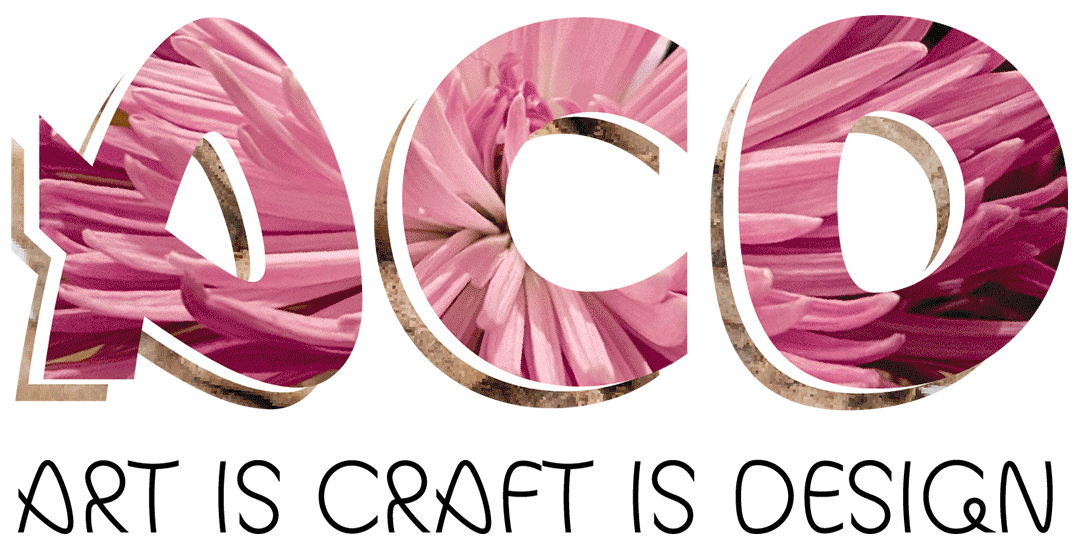- Translucent Cyanotypes
I recently tried a new-to-me filter paper with the hope that I could use it to make translucent chromatograms that don’t need to be mounted. It’s showing limited success with chromatograms but has been fantastic for cyanotypes. Its translucency means that I can fold up the paper, place a digital negative on top of it,…
Read more: Translucent Cyanotypes
- Cyanotype x Chromatogram Progress
Last year, I worked out how to combine cyanotypes with soil chromatography. The deep browns and vibrant blues mix so well together, like the earth, and the water, and the sky. There is so much I want to develop with these combined processes. It’s my main goal for experimentation this year- finding different ways to…
Read more: Cyanotype x Chromatogram Progress
- Pothi Books for Chromatograms
For just over two years, I’ve worked to bring soil chromatography from a lesser known soil science test used to make small scale prints to a more expansive creative technique. For every experiment and art print I made, I made a corresponding print using standard soil chromatography protocols. Each of these prints is a way…
Read more: Pothi Books for Chromatograms
- The Land Loves Us
I am so thankful to have had my show, Mari Miller: The Land Loves Us, up during both my birthday and Lunar New Year. Now that it has been de-installed, here’s a walkthrough of the exhibition for those who couldn’t make it. And for visitors who came on a day when my exhibition pamphlets were…
Read more: The Land Loves Us
- Installing The Land Loves Us
I’ve mostly created 3D work over the years, so I was intimidated at the thought of hanging over 30 prints, not to mention the +20ft banners. Thankfully, the curator, Larry Lee, is exceptionally skilled at installing shows and hanging flat work. My oldest friend, Betsy Zacsek, also has a lot of experience installing shows. Between…
Read more: Installing The Land Loves Us
- Announcing: The Land Loves Us
I am so proud to announce that my chromatography work is currently on display at the Chinese American Museum of Chicago. The show, Mari Miller: The Land Loves Us, runs from January 7th-February 18th, 2024 as part of the museum’s Spotlight Series of Chinese American artists, curated by Larry Lee of Molar Productions. Radical love…
Read more: Announcing: The Land Loves Us
- A New Method For Bleaching and Toning Cyanotypes
Silver nitrate allows you to bleach and tone cyanotypes in one step, with one chemical, and without needing to wash the print after applying the silver nitrate solution.
- Intro to Sewn Book Binding Part 1: Pothi Books
Book binding is an easy entry to making. And while there are specialized book binding materials, this lesson doesn’t require any of them. In fact, if you wanted, you could pick up a pad of drawing paper and yarn at a dollar store, spending only a couple of bucks on enough materials to make a dozen books.
- The Power of DIY
There is a lot of power in DIY. One of the essential tenets of marxism is that workers are alienated from their labor. I think an essential part of our current crisis with capitalism is that this alienation goes beyond jobs. It extends to all facets of our lives. We are alienated from our food.…
Read more: The Power of DIY
- More Pu-Erh Dragonball Chromatography
While cleaning up for the Lunar New Year, I ran across more pu-erh dragonball chromatograms.
- Love, Land, and Chromatography
Last year, I learned how to do chromatography. You may be familiar with science class experiments where you apply a ground up plant or a marker to a piece of filter paper and watch as the colors in your sample separate out as capillary action carries them across the paper. In photography, chromatography is based…
Read more: Love, Land, and Chromatography
- Shiitake Mushrooms
At the end of last year, I started growing my own oyster and shiitake mushrooms. Watching the shiitakes grow beyond the stage where you would normally pick them has showed me that I really didn’t know shiitakes like I thought. Their shapes can encompass so many frills and scallops that I don’t normally see in…
Read more: Shiitake Mushrooms
- The Cai Modeling Materials, MDes Thesis pt. 1
For my industrial design masters thesis at the University of Illinois at Chicago, I developed plastic-free modeling materials. Cai Board can serve as a replacement for extruded polystyrene foam. Cai Clay is an air-drying clay that is an alternative to plastic-based clays.
- FR Shields
Facial recognition software is becoming more and more ubiquitous.What if people started messing with CCTV cameras?Tricking them into thinking they’re an everyday person/celebrity hybrid?What if people showed up to government protests wearing a dictator’s face? This project was created in 2019. Thank you to Bansri Thakkar for modeling.
- Eating Myself
Chinese women and Chinese cuisine are fetishized and made palatable for the consumption of Westerners. I have a number of food allergies and intolerances that have cut me off from eating my grandmother’s food, my Chinese heritage. Experimenting with allergen-friendly versions of the dishes I grew up with is a way to reclaim my heritage.…
Read more: Eating Myself
- Paper House
If we cannot raise manufacturing costs to ensure quality home goods and we cannot teach millions of people to suddenly take care of what they have, what if we instead filled our homes with paper? Unlike in the past, when families would live together their whole lives or gift newlyweds with heritage furniture, many people…
Read more: Paper House
- The Bentwood Bedroom Collection
How can 19th c design relate to modern lives? Many chairs from 19th c Western countries look uncomfortable by today’s standards because people sat differently then. Letting their backs touch the backs of chairs was an example of very poor breeding. Today, everyone tends to lounge in chairs. But chairs in bedrooms are more often…
Read more: The Bentwood Bedroom Collection
- Grocery Backpack
What if we brought all our own packaging to grocery stores? The grocery backpack, created in 2020, doubles as a grocery basket. Extend one strap and wear the bag messenger style. Most cloth produce bags are rectangular, which lets food particles build up in the corners. The grocery backpack comes with rounded corners so as…
Read more: Grocery Backpack
- Textural Translations
In some ways, we live in a more texturally diverse world than we did pre-Industrial Revolution, considering advances in technology combined with novel materials. But our textures tend to have a more shallow relief than they used to.
- A Haptic Blank
With the texture of water as inspiration, I created acoustic panels that not only absorb sound, but play sound when touched.
- Paintings, 2017
These works are an exploration in plant and human anatomy. The above watercolor triptych, “Comparing branching Fibonacci structures”, looks at the structural similarities between human organs and garlic. Left: Spleen with Splenic Vein and Artery- recycles red blood cells and stores white blood cells, part of the lymphatic system, which is part of the immune…
Read more: Paintings, 2017
- De-stigmatizing Opioid Addiction
Between 1999 and 2019, the opioid epidemic killed nearly 841,000 people in the US. Opioids change the physical structure of the brain so that people with Opioid Use Disorder feel like they will die without opioids. People cannot just will themselves out of an addiction. How might we break stigmas so we can support people…
Read more: De-stigmatizing Opioid Addiction
- COVID Mourning Armband
What if we revived the practice of wearing armbands for mourning, to manifest our grief, and to show others that the loss of life is real?
- Learning Basket Making
For years, I wanted to learn basket making. Then I learned that my great grandfather was the village basket maker. Through a combination of self-led experimentation, reading, and watching videos of artisans working, I have been learning how to weave baskets. In 2019 I wove one basket, and it was from a kit. During the…
Read more: Learning Basket Making
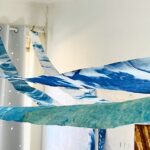 I recently tried a new-to-me filter paper with the hope that I could use it to make translucent chromatograms that don’t need to be mounted. It’s showing limited success with chromatograms but has been fantastic for cyanotypes. Its translucency means that I can fold up the paper, place a digital negative on top of it,… Read more: Translucent Cyanotypes
I recently tried a new-to-me filter paper with the hope that I could use it to make translucent chromatograms that don’t need to be mounted. It’s showing limited success with chromatograms but has been fantastic for cyanotypes. Its translucency means that I can fold up the paper, place a digital negative on top of it,… Read more: Translucent Cyanotypes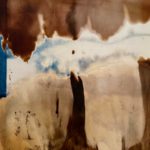 Last year, I worked out how to combine cyanotypes with soil chromatography. The deep browns and vibrant blues mix so well together, like the earth, and the water, and the sky. There is so much I want to develop with these combined processes. It’s my main goal for experimentation this year- finding different ways to… Read more: Cyanotype x Chromatogram Progress
Last year, I worked out how to combine cyanotypes with soil chromatography. The deep browns and vibrant blues mix so well together, like the earth, and the water, and the sky. There is so much I want to develop with these combined processes. It’s my main goal for experimentation this year- finding different ways to… Read more: Cyanotype x Chromatogram Progress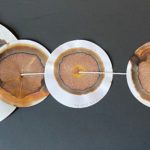 For just over two years, I’ve worked to bring soil chromatography from a lesser known soil science test used to make small scale prints to a more expansive creative technique. For every experiment and art print I made, I made a corresponding print using standard soil chromatography protocols. Each of these prints is a way… Read more: Pothi Books for Chromatograms
For just over two years, I’ve worked to bring soil chromatography from a lesser known soil science test used to make small scale prints to a more expansive creative technique. For every experiment and art print I made, I made a corresponding print using standard soil chromatography protocols. Each of these prints is a way… Read more: Pothi Books for Chromatograms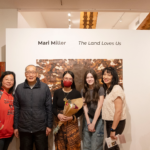 I am so thankful to have had my show, Mari Miller: The Land Loves Us, up during both my birthday and Lunar New Year. Now that it has been de-installed, here’s a walkthrough of the exhibition for those who couldn’t make it. And for visitors who came on a day when my exhibition pamphlets were… Read more: The Land Loves Us
I am so thankful to have had my show, Mari Miller: The Land Loves Us, up during both my birthday and Lunar New Year. Now that it has been de-installed, here’s a walkthrough of the exhibition for those who couldn’t make it. And for visitors who came on a day when my exhibition pamphlets were… Read more: The Land Loves Us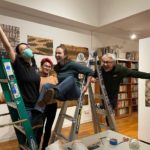 I’ve mostly created 3D work over the years, so I was intimidated at the thought of hanging over 30 prints, not to mention the +20ft banners. Thankfully, the curator, Larry Lee, is exceptionally skilled at installing shows and hanging flat work. My oldest friend, Betsy Zacsek, also has a lot of experience installing shows. Between… Read more: Installing The Land Loves Us
I’ve mostly created 3D work over the years, so I was intimidated at the thought of hanging over 30 prints, not to mention the +20ft banners. Thankfully, the curator, Larry Lee, is exceptionally skilled at installing shows and hanging flat work. My oldest friend, Betsy Zacsek, also has a lot of experience installing shows. Between… Read more: Installing The Land Loves Us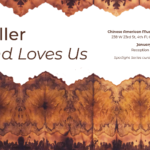 I am so proud to announce that my chromatography work is currently on display at the Chinese American Museum of Chicago. The show, Mari Miller: The Land Loves Us, runs from January 7th-February 18th, 2024 as part of the museum’s Spotlight Series of Chinese American artists, curated by Larry Lee of Molar Productions. Radical love… Read more: Announcing: The Land Loves Us
I am so proud to announce that my chromatography work is currently on display at the Chinese American Museum of Chicago. The show, Mari Miller: The Land Loves Us, runs from January 7th-February 18th, 2024 as part of the museum’s Spotlight Series of Chinese American artists, curated by Larry Lee of Molar Productions. Radical love… Read more: Announcing: The Land Loves Us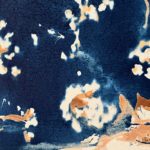 Silver nitrate allows you to bleach and tone cyanotypes in one step, with one chemical, and without needing to wash the print after applying the silver nitrate solution.
Silver nitrate allows you to bleach and tone cyanotypes in one step, with one chemical, and without needing to wash the print after applying the silver nitrate solution.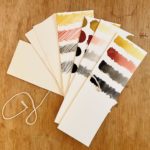 Book binding is an easy entry to making. And while there are specialized book binding materials, this lesson doesn’t require any of them. In fact, if you wanted, you could pick up a pad of drawing paper and yarn at a dollar store, spending only a couple of bucks on enough materials to make a dozen books.
Book binding is an easy entry to making. And while there are specialized book binding materials, this lesson doesn’t require any of them. In fact, if you wanted, you could pick up a pad of drawing paper and yarn at a dollar store, spending only a couple of bucks on enough materials to make a dozen books.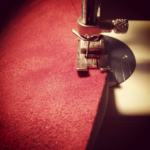 There is a lot of power in DIY. One of the essential tenets of marxism is that workers are alienated from their labor. I think an essential part of our current crisis with capitalism is that this alienation goes beyond jobs. It extends to all facets of our lives. We are alienated from our food.… Read more: The Power of DIY
There is a lot of power in DIY. One of the essential tenets of marxism is that workers are alienated from their labor. I think an essential part of our current crisis with capitalism is that this alienation goes beyond jobs. It extends to all facets of our lives. We are alienated from our food.… Read more: The Power of DIY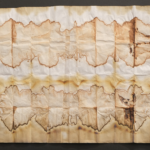 While cleaning up for the Lunar New Year, I ran across more pu-erh dragonball chromatograms.
While cleaning up for the Lunar New Year, I ran across more pu-erh dragonball chromatograms.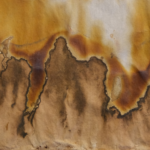 Last year, I learned how to do chromatography. You may be familiar with science class experiments where you apply a ground up plant or a marker to a piece of filter paper and watch as the colors in your sample separate out as capillary action carries them across the paper. In photography, chromatography is based… Read more: Love, Land, and Chromatography
Last year, I learned how to do chromatography. You may be familiar with science class experiments where you apply a ground up plant or a marker to a piece of filter paper and watch as the colors in your sample separate out as capillary action carries them across the paper. In photography, chromatography is based… Read more: Love, Land, and Chromatography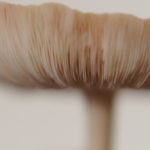 At the end of last year, I started growing my own oyster and shiitake mushrooms. Watching the shiitakes grow beyond the stage where you would normally pick them has showed me that I really didn’t know shiitakes like I thought. Their shapes can encompass so many frills and scallops that I don’t normally see in… Read more: Shiitake Mushrooms
At the end of last year, I started growing my own oyster and shiitake mushrooms. Watching the shiitakes grow beyond the stage where you would normally pick them has showed me that I really didn’t know shiitakes like I thought. Their shapes can encompass so many frills and scallops that I don’t normally see in… Read more: Shiitake Mushrooms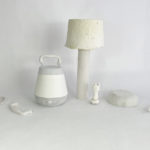 For my industrial design masters thesis at the University of Illinois at Chicago, I developed plastic-free modeling materials. Cai Board can serve as a replacement for extruded polystyrene foam. Cai Clay is an air-drying clay that is an alternative to plastic-based clays.
For my industrial design masters thesis at the University of Illinois at Chicago, I developed plastic-free modeling materials. Cai Board can serve as a replacement for extruded polystyrene foam. Cai Clay is an air-drying clay that is an alternative to plastic-based clays.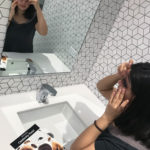 Facial recognition software is becoming more and more ubiquitous.What if people started messing with CCTV cameras?Tricking them into thinking they’re an everyday person/celebrity hybrid?What if people showed up to government protests wearing a dictator’s face? This project was created in 2019. Thank you to Bansri Thakkar for modeling.
Facial recognition software is becoming more and more ubiquitous.What if people started messing with CCTV cameras?Tricking them into thinking they’re an everyday person/celebrity hybrid?What if people showed up to government protests wearing a dictator’s face? This project was created in 2019. Thank you to Bansri Thakkar for modeling.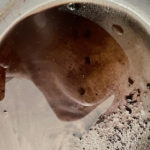 Chinese women and Chinese cuisine are fetishized and made palatable for the consumption of Westerners. I have a number of food allergies and intolerances that have cut me off from eating my grandmother’s food, my Chinese heritage. Experimenting with allergen-friendly versions of the dishes I grew up with is a way to reclaim my heritage.… Read more: Eating Myself
Chinese women and Chinese cuisine are fetishized and made palatable for the consumption of Westerners. I have a number of food allergies and intolerances that have cut me off from eating my grandmother’s food, my Chinese heritage. Experimenting with allergen-friendly versions of the dishes I grew up with is a way to reclaim my heritage.… Read more: Eating Myself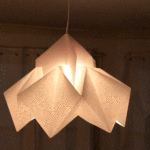 If we cannot raise manufacturing costs to ensure quality home goods and we cannot teach millions of people to suddenly take care of what they have, what if we instead filled our homes with paper? Unlike in the past, when families would live together their whole lives or gift newlyweds with heritage furniture, many people… Read more: Paper House
If we cannot raise manufacturing costs to ensure quality home goods and we cannot teach millions of people to suddenly take care of what they have, what if we instead filled our homes with paper? Unlike in the past, when families would live together their whole lives or gift newlyweds with heritage furniture, many people… Read more: Paper House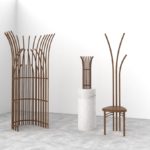 How can 19th c design relate to modern lives? Many chairs from 19th c Western countries look uncomfortable by today’s standards because people sat differently then. Letting their backs touch the backs of chairs was an example of very poor breeding. Today, everyone tends to lounge in chairs. But chairs in bedrooms are more often… Read more: The Bentwood Bedroom Collection
How can 19th c design relate to modern lives? Many chairs from 19th c Western countries look uncomfortable by today’s standards because people sat differently then. Letting their backs touch the backs of chairs was an example of very poor breeding. Today, everyone tends to lounge in chairs. But chairs in bedrooms are more often… Read more: The Bentwood Bedroom Collection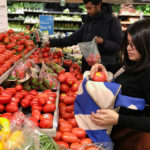 What if we brought all our own packaging to grocery stores? The grocery backpack, created in 2020, doubles as a grocery basket. Extend one strap and wear the bag messenger style. Most cloth produce bags are rectangular, which lets food particles build up in the corners. The grocery backpack comes with rounded corners so as… Read more: Grocery Backpack
What if we brought all our own packaging to grocery stores? The grocery backpack, created in 2020, doubles as a grocery basket. Extend one strap and wear the bag messenger style. Most cloth produce bags are rectangular, which lets food particles build up in the corners. The grocery backpack comes with rounded corners so as… Read more: Grocery Backpack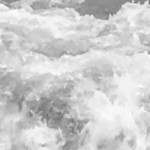 In some ways, we live in a more texturally diverse world than we did pre-Industrial Revolution, considering advances in technology combined with novel materials. But our textures tend to have a more shallow relief than they used to.
In some ways, we live in a more texturally diverse world than we did pre-Industrial Revolution, considering advances in technology combined with novel materials. But our textures tend to have a more shallow relief than they used to.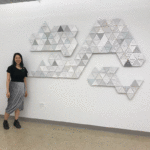 With the texture of water as inspiration, I created acoustic panels that not only absorb sound, but play sound when touched.
With the texture of water as inspiration, I created acoustic panels that not only absorb sound, but play sound when touched.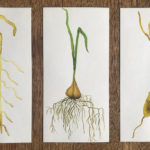 These works are an exploration in plant and human anatomy. The above watercolor triptych, “Comparing branching Fibonacci structures”, looks at the structural similarities between human organs and garlic. Left: Spleen with Splenic Vein and Artery- recycles red blood cells and stores white blood cells, part of the lymphatic system, which is part of the immune… Read more: Paintings, 2017
These works are an exploration in plant and human anatomy. The above watercolor triptych, “Comparing branching Fibonacci structures”, looks at the structural similarities between human organs and garlic. Left: Spleen with Splenic Vein and Artery- recycles red blood cells and stores white blood cells, part of the lymphatic system, which is part of the immune… Read more: Paintings, 2017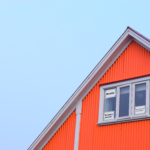 Between 1999 and 2019, the opioid epidemic killed nearly 841,000 people in the US. Opioids change the physical structure of the brain so that people with Opioid Use Disorder feel like they will die without opioids. People cannot just will themselves out of an addiction. How might we break stigmas so we can support people… Read more: De-stigmatizing Opioid Addiction
Between 1999 and 2019, the opioid epidemic killed nearly 841,000 people in the US. Opioids change the physical structure of the brain so that people with Opioid Use Disorder feel like they will die without opioids. People cannot just will themselves out of an addiction. How might we break stigmas so we can support people… Read more: De-stigmatizing Opioid Addiction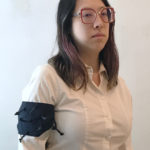 What if we revived the practice of wearing armbands for mourning, to manifest our grief, and to show others that the loss of life is real?
What if we revived the practice of wearing armbands for mourning, to manifest our grief, and to show others that the loss of life is real?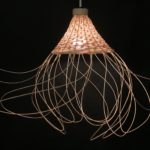 For years, I wanted to learn basket making. Then I learned that my great grandfather was the village basket maker. Through a combination of self-led experimentation, reading, and watching videos of artisans working, I have been learning how to weave baskets. In 2019 I wove one basket, and it was from a kit. During the… Read more: Learning Basket Making
For years, I wanted to learn basket making. Then I learned that my great grandfather was the village basket maker. Through a combination of self-led experimentation, reading, and watching videos of artisans working, I have been learning how to weave baskets. In 2019 I wove one basket, and it was from a kit. During the… Read more: Learning Basket Making